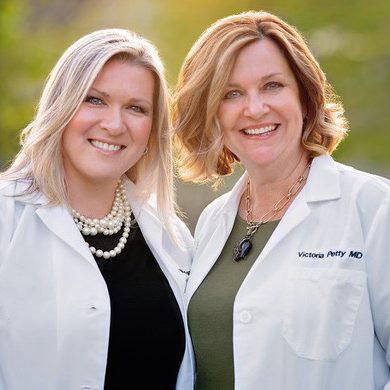Endometriosis is a condition where the inner lining of the uterus, known as the endometrium, grows outside the uterus. Endometriosis can result in endometrial tissue to grow on the ovaries, bowel, and tissues lining the pelvis. Since endometrial tissue is affected by the hormones responsible for menstruation regardless of its location, misplaced endometrial tissue can become inflamed and painful. It can also grow, thicken, and break down like it would if it were inside the uterus. However, the tissue will have nowhere to go and will remain in the pelvis. This can cause irritation, scar formation, adhesions, severe pain during periods, and fertility problems. There are four stages of endometriosis, including:
Stage 1: Minimal
Small lesions and endometrial implants on the ovary accompanied by inflammation in or around the pelvic cavity.
Stage 2: Mild
Lesions and shallow implants on the ovary and pelvic lining.
Stage 3: Moderate
Deep implants on the ovary and pelvic lining, as well as an increased number of lesions.
Stage 4: Severe
Deep implants on your ovaries, pelvic lining, fallopian tubes, and bowels.
Did You Know?
Endometriosis is a leading cause of infertility and affects an estimated 10% of women. Research indicates that endometriosis affects 1 out of every 2 infertile women. However, it is possible to get pregnant with the proper treatment.
Frequently Asked Questions:
Do I have endometriosis?
While endometriosis can only be diagnosed by your gynecologist, you may be affected by endometriosis if you experience any of the following:
- Painful periods
- Heavy menstrual bleeding or bleeding between periods
- Cramps 1-2 weeks prior to menstruation
- Pain in the lower abdomen before and during menstruation
- Infertility
- Pain after sexual intercourse
- Lower back pain
- Discomfort during bowel movements
(should read)It is important to note that it is possible to have endometriosis without experiencing symptoms. To be evaluated for endometriosis, schedule an appointment with Bucks County Women’s Wellness today.
How do gynecologists at Bucks County Women’s Wellness diagnose endometriosis?
At Bucks County Women’s Wellness, our gynecologists will first ask you about your symptoms and medical history. A pelvic exam will then be performed to check for cysts or scarring behind the uterus. An ultrasound may also be performed to examine your reproductive organs for any abnormalities. If your gynecologist strongly suspects endometriosis, then the only way to know for sure is by doing a laparoscopy to view the tissue directly. During a diagnostic laparoscopy, the endometriosis can also be removed.
How do gynecologists at Bucks County Women’s Wellness treat endometriosis?
At Bucks County Women’s Wellness, we offer a variety of treatments to treat endometriosis. Your exact treatment will depend on a number of factors, however here are some common treatments for endometriosis:
- Pain medications
- Hormone therapy to decrease tissue growth
- Gonadotropin-releasing hormone (GnRH) agonists and antagonists to block menstruation
- Laparoscopy to remove endometriosis implants
- Hysterectomy



